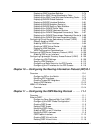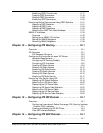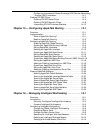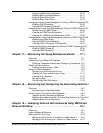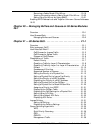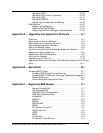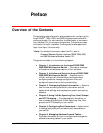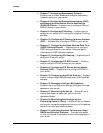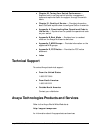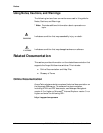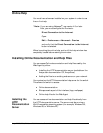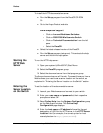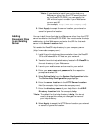
xiv Avaya P550R, P580, P880, and P882 Multiservice Switch User Guide, v5.3.1
Preface
■ Chapter 7, Configuring Redundancy Options —
Explains how to install, enable and configure redundancy
hardware options on your switch.
■ Chapter 8, Configuring Domain Name System (DNS)
and Remote Authentication Dial-In User Service
(RADIUS) Clients — Explains how to configure DNS and
RADIUS clients on your switch.
■ Chapter 9, Configuring IP Routing — Explains how to
configure your switch for IP routing and interpret IP routing
statistics.
■ Chapter 10, Configuring IP Routing Interface Protocol
(RIP) — Explains how to configure IP RIP on your switch.
■ Chapter 11, Configuring the Open Shortest Path First
(OSPF) Routing Protocol — Explains how to configure
OSPF routing protocol on your switch. Also provided is
information on OSPF statistical displays.
■ Chapter 12, Configuring IPX Routing — Explains how to
configure IPX on your switch.
■ Chapter 13, Configuring IPX RIP Protocol — Explains
how to configure IPX RIP protocol on your switch.
■ Chapter 14, Configuring IPX Service Advertisement
Protocol (SAP) — Explains how to configure IPX SAP on
your switch.
■ Chapter 15, Configuring AppleTalk Routing — Explains
how to configure AppleTalk parameters and view AppleTalk
statistics.
■ Chapter 16, Managing Intelligent Multicasting —
Explains how to configure and manage intelligent multicast
sessions on your switch.
■ Chapter 17, Monitoring the Switch — Explains how to
use the Web Agent to assess your switch’s current
operational status.
■ Chapter 18, Monitoring and Configuring the
Forwarding Cache (L3 Only) — Explains how to interpret
and monitor forwarding operations that occur in the address
cache of the multilayer media modules.
■ Chapter 19, Analyzing Network Performance Using
RMON and Ethernet Statistics — Provides information
on how to interpret the statistics counter values displayed in
your switch.



